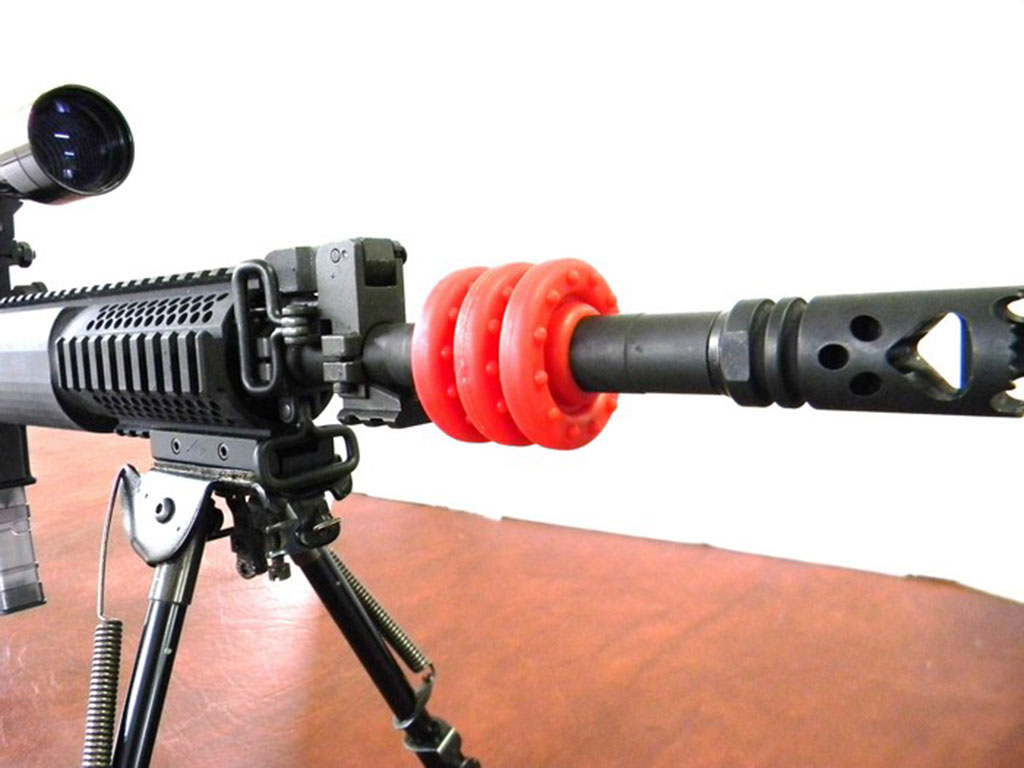Some machine shop goodness from LaRue Tactical:
 Some of you might find this type of thing boring. I really like machining and automation, espeically when it’s firearm or clothing related.
Some of you might find this type of thing boring. I really like machining and automation, espeically when it’s firearm or clothing related.
No LaRue isn’t making barrel dampeners (pictured left)… yet. Maybe they’ll be operator enough someday.
Thoughts?



Comments
4 responses to “Making AR-15 Barrels Over At LaRue”
What kind of man would not like a video called “Deep Hole Drilling”? Seriously?
Thanks for posting this. As an engineer who has worked for one of the big gun companies on the manufacturing side, it’s always cool to see how others are doing things.
I wonder why their system is set up to have like 16 blanks loaded as work-in-process, plus the other 18 or so that are held in stock at the end. Modern flexible manufacturing systems have almost universally gone to a non-batch, low-inventory, single-piece-flow concept whenever possible, for a variety of good reasons.
I’m also not sure how they could run this with a different barrel length (as they chose to hold the blanks by the very ends for some reason), which leads me to believe that they either have several duplicates of these automatic loader/driller machines for various barrels, or they just cut off the ends of the blanks to make shorter barrels which is awfully wasteful and time-consuming.
I know larue makes an excellent rifle and I own several of their products myself, but I think I can see where some of the manufacturing cost comes from :)
My guess is they have so many blanks loaded because LaRue needs to make that many because all them are already paid for and people have been waiting a long time.
Yea I’m not sure about the barrel length thing! I remember seeing some photographs of the inside of their facility a few years back and they had tons of the same equipment, so maybe they even have a few of these machines.
Yeah, that’s true, but it’s still pretty nice to have some flexibility in your manufacturing. The company I worked at had a continuous 6mo+ backlog and at one point decided to stop accepting new orders because they had stacked up so much. We still ran as much 1-piece-flow as possible and it really paid off. It’s nice to have as little work-in-process and inventory as possible for things like when there’s an issue with material discovered farther down the line (and you have to scrap a bunch of parts), or if you find out at final inspection that someone has been running a machine in such a way that things are out of spec (and you have to scrap a bunch of parts), or if there’s a slight design change or whatever.
It’s not something that would make a huge difference one way or the other in the case of this one particular machine, but when you apply the philosophy across the entire production floor, the cost savings and reductions in production time are pretty significant.
Shop space costs money too, and while for this one machine you might only get like 10 extra sq ft by simplifying it, you might be able to squeeze in a few more mills or something if you are ruthless with machine footprints across the whole floor.